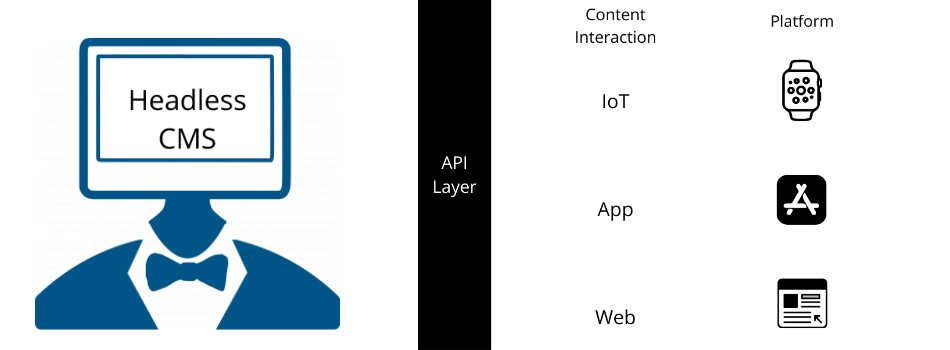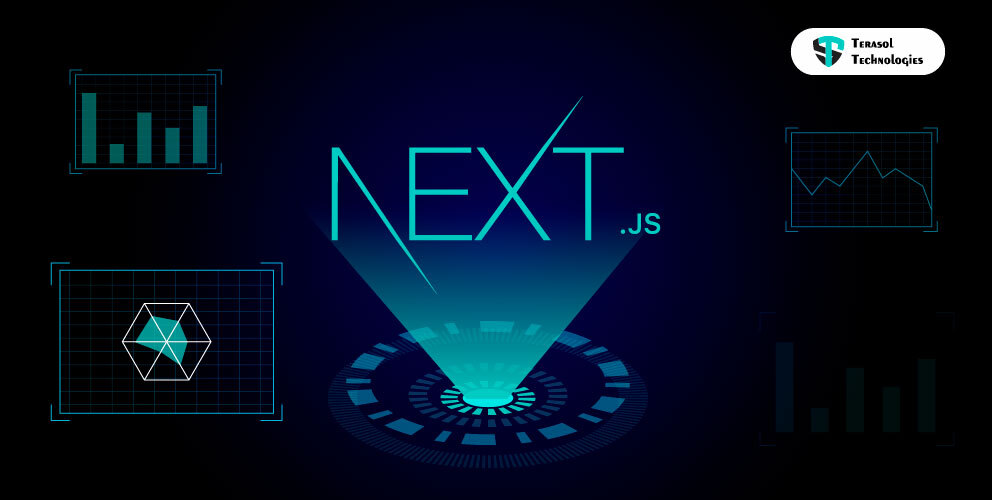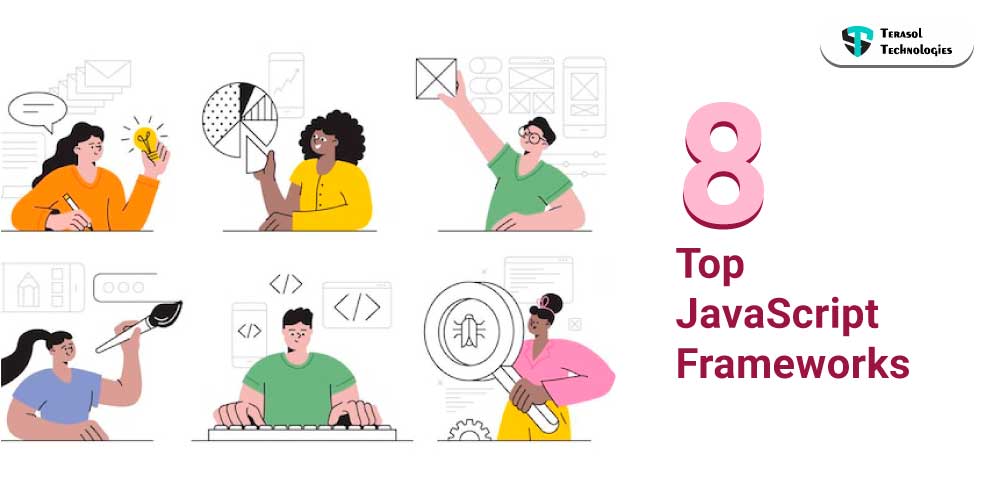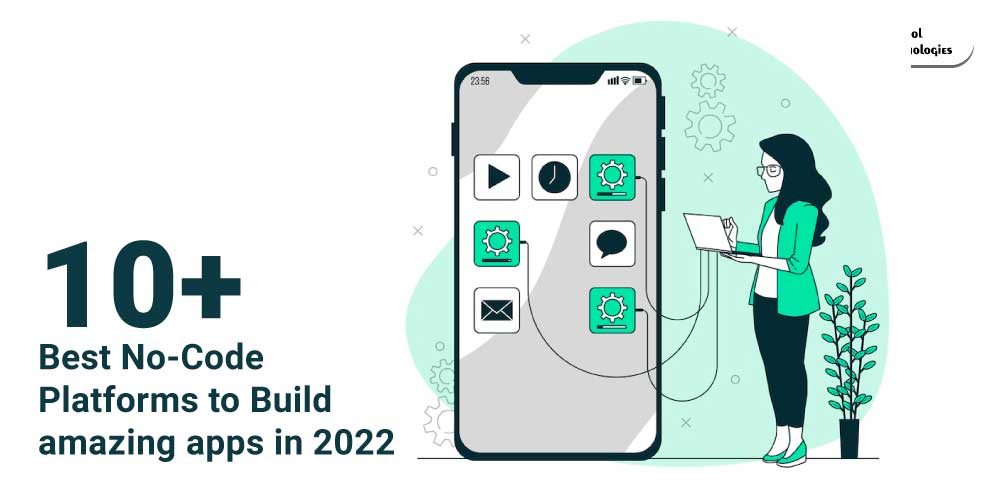According to MarketWatch, the CMS industry market size is expected to expand at a CAGR of 16.7% and will reach USD 123 billion in 2026.
Source: Zion Market Research
In this regard, a new life for CMS solutions began in 2022, in the past-COVID world, when the Internet began to live an even more active existence, and online sales soared three times.
Creating and releasing high-quality content is a sure way for businesses to expand, reach new customers, and deliver a better digital experience. Customer experiences require a flexible backend solution for brands and retailers aiming to promote commerce across many channels.
For instance,
Nowadays, digital platforms have matured with the help of web application development companies, and more flexible solutions have become a necessity.
Websites, mobile sites, applications, digital displays, conversational interfaces, and more are now being developed by businesses.
Meanwhile, traditional content management systems (CMS) have fallen behind. Why?
Because a CMS organizes content into webpage-oriented frameworks, the same content cannot be adapted to other digital platforms.
Traditional content management systems (CMS) are designed to handle solely browser-based shopping, not full omnichannel commerce.
So, what’s the solution that allows businesses to create outstanding omnichannel experiences at scale in a flexible fashion.
Well, it’s Headless CMS!
In this blog, you will discover what is CMS is, and examples of when, why, and where to use headless CMS.
Let’s dive deeper into headless CMS to understand it better!
What is Headless CMS?
Isn't the term "headless CMS" amusing?
You may think of it as technology without a head!
In reality, a headless CMS conjures up even stranger images, a well-functioning headless CMS isn't short on heads; it generally has numerous heads, resembling a terrifying hydra monster.
Regardless of this, the headless CMS paradigm takes a strong standpoint on optimized content distribution.
So headless CMS means,

Head = Frontend static codes, allowing content to be displayed on only one device. And the phrase "headless" refers to the lack of a front-end component.
As a result, the headless CMS comes with a back-end, a database, and an API for content distribution.
You can say, hydra-monster is well and alive as instead of the back end regulating the flow of all information to one area, such as a website with templates, a RESTful API (or a GraphQL API) allows the material to travel to other places.
You can provide content to any device, browser, or application by publishing content via API. The key benefit is that you don't have to build the backend with the frontend for only one source.
Furthermore, there is no need for any hosts. As a result, managing a headless CMS is simpler than maintaining a non-headless CMS.
As a result, the workflow and teamwork improve.
In 2022, we expect to see a rise in the adoption of headless CMS development, which allows businesses and developers to deliver and manage content as quickly and easily as possible.
That's because a headless CMS's beauty and key strength are that it can support a variety of content display platforms, including websites, mobile phones, CRMs, and smartwatches.
A headless CMS is made up of three main components:
- Content and digital assets are stored in a database,
- An API to link the CMS to customer-facing devices and channels, and,
- A content management layer for authoring content.
Now you know what is headless CMS, there are numerous advantages to using Headless CMS. Let's take a look at a few of them.
So, Why go Headless?
.png?width=950&name=Headless%20CMS%20Development%20(3).png)
The headless CMS is gaining popularity here, there, and everywhere. It's the go-to solution for omnichannel digital distribution, or offering material in a way that seems like integrated, responsive, multi-touchpoint marketing, sales, and customer care to customers.
Here are some benefits why businesses should go for headless CMS-
- Improved frontend experience management- A headless CMS makes it easy to design a fantastic customer experience across several platforms because it lacks a predetermined frontend framework.
- Security- Using this will prevent malware assaults because the content publishing environment isn't accessible from the database.
- Easy to Customize- Because the front end and back end are separated, there is no need for separate maintenance time. It enables you to customize your website at any time without sacrificing performance.
- Scalable- Headless CMSs are more scalable than traditional CMSs. It is because your team won't have to deal with any errors, downtime, or performance issues while working on your website environments if the back-end platform is suffering performance issues.
- Developers have more options and flexibility- APIs can consume any type of content, allowing developers to use their preferred frontend technologies and programming languages. You can use React, Next, Ruby, or Vue to create your application. It's also easier to switch from one framework to another with such flexibility.
- Improved omnichannel commerce management- A headless CMS provides a central location for managing content across many channels. Marketers only make one edit to the content. The platform then sends raw content to each channel via APIs, where it is transformed and stylized accordingly.
- Makes your IT stack future-proof- You can future-proof your tech stack with the flexibility of a headless CMS. Any new frameworks that emerge can be used by developers. The CMS can integrate with any third-party technology thanks to a set of APIs.
Some Use Cases of Headless CMS
There are numerous applications for Headless CMS. It is the beauty of Headless CMS: it can assist any organization in meeting its specific needs.
However, some use cases appear more frequently than others. Here are some of the scenarios where Headless CMS outperforms other CMSs.
- Headless When it comes to segregating content from the front-end of your website, a CMS comes in handy (Tech Stack).
- Vue.js, Angular.js, Next.js, React.js, and other JavaScript Frameworks are used in websites and web applications.
- Static site generators are used to construct websites (Jekyll, 11ty, Gatsby).
- To improve the functionality of your e-commerce platform.
- To make product information on eCommerce sites more accurate.
- Use it to plan a new feature release for your product.
- While the development of native mobile apps (Android, iOS, Windows Phone).
- To distribute material across many platforms and channels.
- Enhance the user experience and use it as a home automation solution's configuration interface.
- Startups with a strong digital presence.
There are numerous features of Headless CMS, in addition to the numerous use cases. Here are a few of them.

Here are Some Amazing Features of a Headless CMS
Below are some amazing features of headless CMS that help your business get greater user engagement.
1. Cloud-hosting
The software's seller often hosts a headless CMS on the cloud. To speed up content distribution to users regardless of their location, cloud-based headless CMS solutions frequently use a geographically distributed network of content delivery networks (CDNs).
2. Data Integration
Data interaction with your other services and data repositories is possible with headless CMS solutions.
3. Repository for content and digital assets
A headless CMS stores your content and digital assets in a centralized database. The software can be used to host a variety of file formats, including photographs, movies, and more.
4. Multiple APIs
APIs are the means by which the headless CMS communicates with devices in order to show content. The headless CMS can make use of a variety of APIs.
5. Page builders and editors
To build your pages, the software may feature a What You See Is What You Get (WYSIWYG) editor and/or a drag-and-drop page builder, depending on the type of headless CMS.
6. Versioning
Headless CMS software with versioning allows you to preserve numerous versions of your pages. This enables marketers to swiftly create new material to support a variety of promotional campaigns.
7. Different types of pages and categories
You may create any number of different types of pages with a headless CMS. Product description pages (PDPs), category pages, landing pages, and home pages are all examples of this.
Who is involved in the headless CMS?
A headless CMS can accommodate a variety of users, including:
Business users:
Merchandisers and marketers may create experiences and publish content across several channels using a headless CMS. Many systems enable them to save components in order to create their desired experiences without the need for developer support.
Creative members:
With minimal coding knowledge, creative members may build designs and apply them to front-end experiences.
Developers:
Developers collaborate with business users and software development company to design reusable components that make page creation more efficient. They also use their preferred frameworks to enhance features.
Many businesses in different industries are implementing a headless CMS to create a modern tech stack that balances flexibility, speed, and creativity with security and stability.
Here are some of the industries that require headless CMS:
- Gaming and media industries
- Tech development firms
- Retail and e-commerce business
- Logistics and Travel
- Financial Services
- Sports firms
Transform your CMS with Terasol
Everything we engage with is material in some form or another, and the internet is becoming a bigger part of our daily life. As a result, attracting new consumers or being the one in charge of content creation requires a better user experience.
Finally, whether or not to switch to a Headless CMS is entirely dependent on your business goals and requirements.
But as content is created and consumed on a bigger scale across many devices and channels, strategies get more complex, technology evolves quickly, and businesses see the need for Headless CMS sooner or later.
The future of CMS is undoubtedly a headless CMS, in which content travels more freely and interacts with customers across many platforms, devices, and channels.
A customized Headless CMS will undoubtedly provide your potential consumers with the ideal experience. At the same time, it allows your company the freedom to use whatever technology it wants.
Terasol Technologies, a tech development company, can customize your Headless CMS for your business. Contact us to get your own customized Headless CMS that gives the finest experience.


